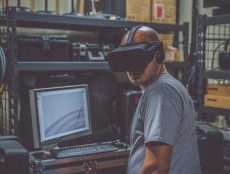
Articles
K-12
NEPC’s Study, Virtual Schools in the U.S. 2019, Raises Concerns
By Cait Etherington
June 04, 2019
On May 28th, the National Education Policy Center (NEPC) released a new report on virtual schools. Virtual Schools in the U.S. 2019 confirms that interest in virtual schools continues to grow across the United States. Unfortunately, concerns about quality, class size, and accountability also prevail.
The Good News About Virtual Schools
To begin, the NEPC study found that interest in and acceptance of virtual and blended schools continues to grow nationwide. The NEPC found that from 2017 to 2018, the United States was home to 501 virtual schools and that these schools enrolled close to 300,000 students. There were also 300 blended schools enrolling over 132,000 students nationwide. Between 2016-2017 and 2017-2018, virtual school enrollments increased by approximately 16,000 students in the United States. But the rapid scaling of virtual and blended schools also has a downside.
The Bad News About Virtual Schools
The study found that the largest virtual schools were those operating as for-profit organizations. These for-profit schools were found to be more than four times the size of other virtual institutions. Virtual schools can scale more quickly than brick-and-mortar schools, and this is part of their appeal, but the NEPC study suggests scaling too quickly may also be a problem.
One of the most troubling findings of Virtual Schools in the U.S. 2019’s concerns performance. The study found that many online schools, especially for-profits, were not meeting acceptable school performance levels. Blended schools appeared to follow a similar pattern. These findings, however, may also be incomplete. The study indicates that only 56% of the virtual schools and 50% of the blended schools had any school performance data at all.
While it is tempting to jump to the conclusion that the problem is the online format, in reality, the real problem may be the high student-teacher ratio in the nation’s virtual schools. While the average student-teacher ratio is 16 students per teacher in the nation’s public school system, in virtual schools, it is 44. Blended schools are doing somewhat better, but with a student-teacher ratio of 34, they are still well above nationwide averages.
Mixed Findings on Diversity
Online schools are frequently viewed as a way to bring education to learners who may otherwise have limited access. For example, eLearning Inside has previously published articles on virtual schools responding to the needs of students living in remote and Native American communities. The NEPC study suggest that virtual schools may be promoting diversity on some accounts but not on all accounts.
Blended schools were found to have a higher proportion of Hispanic students when compared to national enrollment levels. In addition, despite the limited data on special education, there are indications that online schools are enrolling a higher proportion of students with special needs. However, in general, Virtual Schools in the U.S. 2019 found that online schools currently enroll fewer students who identify as minorities.
Overall, in 2017-2018, 65% of the students in online schools identified as White-Non-Hispanic. In contrast, the national mean was 49.8%. The study also found that a mere 12.1% of students in virtual schools were Black compared to 25.5% nationwide, and only 14.1% of students were Hispanic compared to 15.5% nationwide. Compared to national public school enrollments, low-income students were also less likely to be enrolled in a virtual school.
Virtual Schools in the U.S. 2019’s Key Recommendations
In light of its mixed findings, the authors of Virtual Schools in the U.S. 2019 put forward a series of recommendations. The study’s most explicit recommendations regard growth. Given the poor performance by both full-time virtual and blended schools, the study recommends that until poor performance issues are addressed, policymakers, “Slow or stop the growth in the number of virtual and blended schools.” The study also recommends that the size of enrollments be limited.
The NEPC’s 2019 study on virtual schools might not influence individuals who support virtual schools but one thing is clear: The report contains a lot of useful data for those policymakers and politicians currently looking to put the brakes on the further expansion of virtual schools, especially those operating as for-profit entities.
The Virtual Schools in the U.S. 2019 study is available on the NEPC website.









[…] Continue reading the article here […]
[…] is charged with many roles, and training is perhaps the most difficult of them. However, the use of virtual reality has been shown to simplify the hassle and reduce human involvement in the training process, which […]